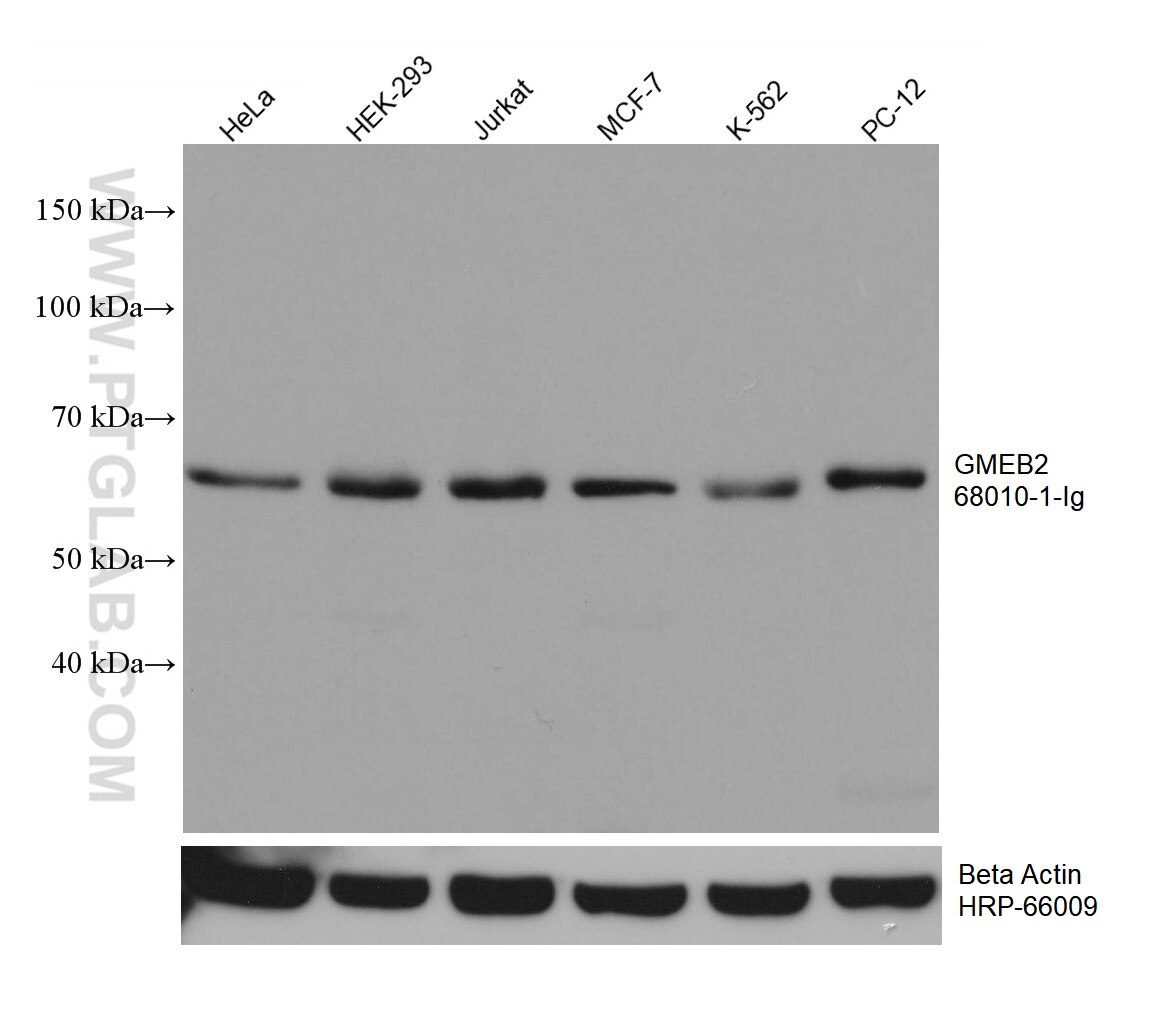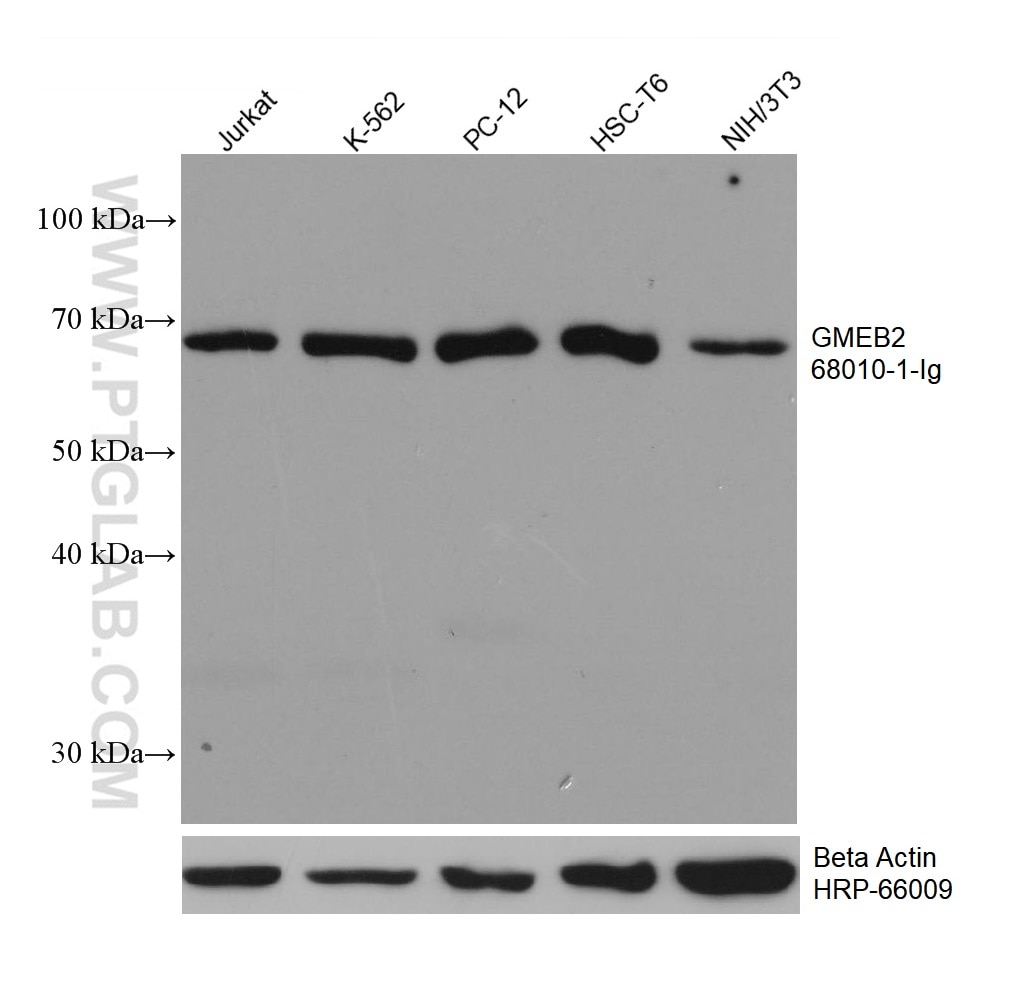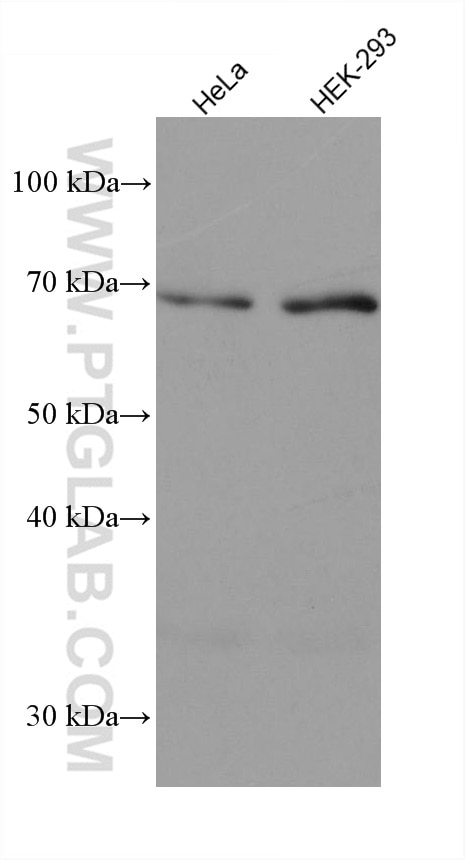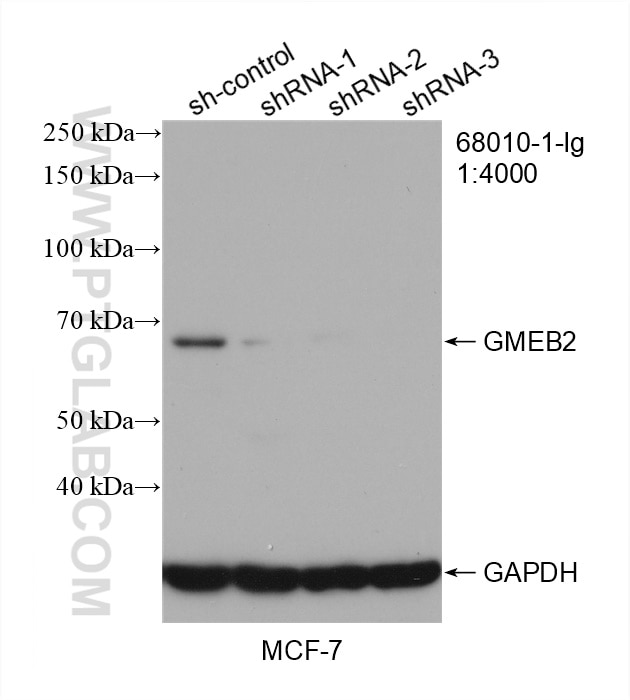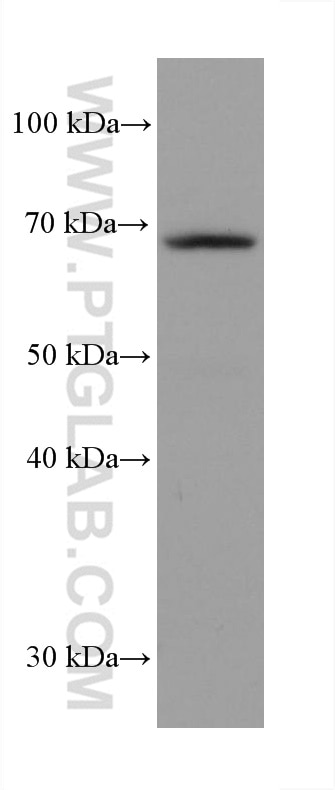- Featured Product
- KD/KO Validated
GMEB2 Monoklonaler Antikörper
GMEB2 Monoklonal Antikörper für WB, ELISA
Wirt / Isotyp
Maus / IgG1
Getestete Reaktivität
human, Maus, Ratte
Anwendung
WB, ELISA
Konjugation
Unkonjugiert
CloneNo.
2H10H8
Kat-Nr. : 68010-1-Ig
Synonyme
Galerie der Validierungsdaten
Geprüfte Anwendungen
| Erfolgreiche Detektion in WB | HeLa-Zellen, HEK-293-Zellen, Jurkat-Zellen, K-562-Zellen, MCF-7-Zellen, NIH/3T3-Zellen, PC-12-Zellen, RAW 264.7-Zellen |
Empfohlene Verdünnung
| Anwendung | Verdünnung |
|---|---|
| Western Blot (WB) | WB : 1:2000-1:10000 |
| It is recommended that this reagent should be titrated in each testing system to obtain optimal results. | |
| Sample-dependent, check data in validation data gallery | |
Produktinformation
68010-1-Ig bindet in WB, ELISA GMEB2 und zeigt Reaktivität mit human, Maus, Ratten
| Getestete Reaktivität | human, Maus, Ratte |
| Wirt / Isotyp | Maus / IgG1 |
| Klonalität | Monoklonal |
| Typ | Antikörper |
| Immunogen | GMEB2 fusion protein Ag31393 |
| Vollständiger Name | glucocorticoid modulatory element binding protein 2 |
| Berechnetes Molekulargewicht | 530 aa, 56 kDa |
| Beobachtetes Molekulargewicht | 68 kDa |
| GenBank-Zugangsnummer | BC036305 |
| Gene symbol | GMEB2 |
| Gene ID (NCBI) | 26205 |
| Konjugation | Unkonjugiert |
| Form | Liquid |
| Reinigungsmethode | Protein-G-Reinigung |
| Lagerungspuffer | PBS mit 0.02% Natriumazid und 50% Glycerin pH 7.3. |
| Lagerungsbedingungen | Bei -20°C lagern. Nach dem Versand ein Jahr lang stabil Aliquotieren ist bei -20oC Lagerung nicht notwendig. 20ul Größen enthalten 0,1% BSA. |
Hintergrundinformationen
GMEB-2 (glucocorticoid modulatory element-binding protein 2), also known as PIF79 (Parvovirus initiation factor p79) or P79PIF, is a DNA-binding protein that plays a crucial role in modulating transcription upon activation by steroid hormones. GMEB-2 is ubiquitously expressed with preferential expression in developmentally important tissues.
Protokolle
| Produktspezifische Protokolle | |
|---|---|
| WB protocol for GMEB2 antibody 68010-1-Ig | Protokoll herunterladen |
| Standard-Protokolle | |
|---|---|
| Klicken Sie hier, um unsere Standardprotokolle anzuzeigen |
